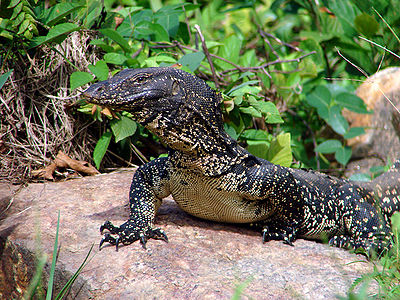The Asian Water Monitor (varanus salvator) is a challenge to keep as pet even for herpers used to handling lizards. Herpers are people involved with reptiles and amphibians. It comes from the word herpetology which is the study of reptiles and amphibians. This lizard’s native habitat is southern Asia from India east to the […]
Reptiles
Welcome to the Pet Reptile page
Many people enjoy having exotic pets such as reptiles and amphibians. Lizards and snakes can have striking colors and patterns and all are interesting to watch. Ownership of a reptile is a challenging experience. Most reptiles have specific environmental needs that can be costly. It’s very important to thoroughly research the needs and care of the reptile you choose. Be sure you are up to the challenge before considering a reptile as a pet. More information to help you make this decision can be found at Do You Want a Pet Reptile?
- Is it okay/recommended to buy a ball python at 3 years old? asked 18th of July 2015 in Lizards by anonymous
- Why won't my tortoise eat, I have tried everything.. peas even crickets, but it just doesn't eat. asked 3rd of May 2015 in Tortioses by anonymous
- How come my snakes eyes are bluish? asked 19th of April 2015 in Snakes by anonymous
- How to tell if a steppe runner lizard is male or female asked 21st of March 2015 in Lizards by anonymous
- What are the round things below the ear on an iguana asked 19th of December 2014 in Lizards by anonymous
- how long do turtles live? asked 11th of December 2016 in Tortioses by anonymous
- how much salmonella do they carry? asked 4th of July 2014 in Turtles by anonymous
- how much seminila d o they carry asked 4th of July 2014 in Turtles by anonymous
View More Q&A
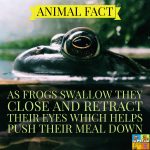
How Frogs Eat Their Prey
If you’ve ever watched a frog eat prey, you’ve probably noticed that they close their eyes when swallowing. Scientists x-rayed frogs as they consumed crickets to discover what happens. The x-rays showed that the frog’s eyes don’t only close as they swallow, they retract down towards the esophagus. During swallowing the eyes appear to touch […]
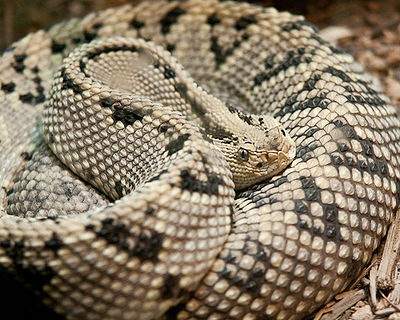
Do Snakes Blink?
You can usually tell when a human or an animal is asleep by their closed eyelids. But snakes don’t have eyelids and can’t blink, making it very difficult to determine when they are asleep. Most species of snakes are nocturnal and hunt at night. They sleep during the day for an average of 10 hours. […]
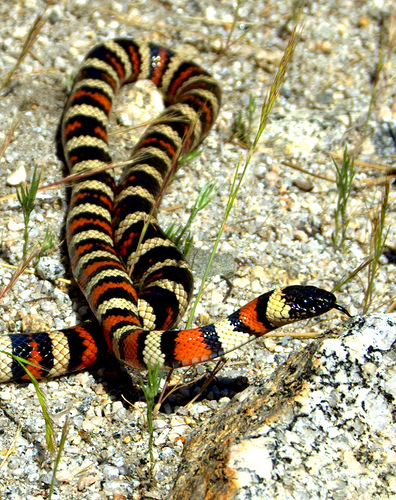
Kingsnake
What are Kingsnakes like? The California King snake is native to the Southwest U.S. from California to Arizona. Adult length is about 3-4 feet. They have interestingly patterned bodies and make good pets if handled gently. A 15 gallon tank that is secure should be provided. As with all snakes, check with the breeder about […]
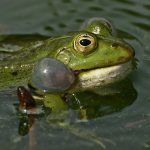
Safe Water for Frogs and Toads
Frogs and toads need enclosures that have both land and water. Both frogs and toads absorb water and oxygen through their skin. In order to maintain the good health of your pet, it’s very important to use the proper water. We get water from many different sources. House water comes from taps, bottles, wells, outdoor […]
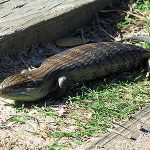
Tail Injuries in Reptiles
Most reptiles rely on their tails for balance especially when climbing. When injuries occur, whether accidental or otherwise, it is cause for concern as it may limit the reptile’s ability to function normally. Tails are sometimes damaged when another creature bites or chews on them, a heavy object falls on them or a door closes […]
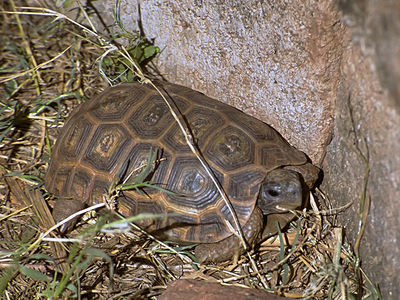
Hinge-Back Tortoise
Hinge-back tortoises originally come from the African rainforests, particularly the Ivory Coast, Congo and Nigeria. There are a number of species of hinge-backs, but the Bell’s Hinge-back is the usual pet. An adult hinge-back’s size is up to 9 inches in diameter and weight is about 4 1/2 lbs. When purchasing a hinge-back, check the […]
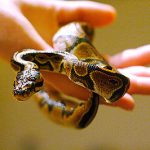
Inclusion Body Disease in Snakes
Inclusion Body Disease (IBD) is highly contagious within the snake family, primarily found in Boa Constrictors and Pythons. It affect mainly the nervous system, but other organs as well. There are microscopic changes seen in the snake’s body cells (nervous system, liver, kidneys, blood) known as inclusion bodies, giving the name to the disease. Researchers […]
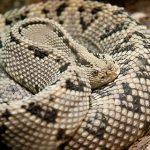
Reptiles and Brumation
When reptiles hibernate, the term used is brumation. Preparing for brumation, the pet slows down considerably, stops eating, drinking and defecating. Brumation or hibernation is a natural process that occurs in some animals. When you observe your pet get ready to brumate, you can help with the transition. First, make sure your pet is healthy […]
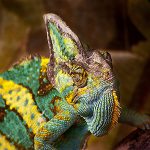
How do Chameleons Change Color?
The more than 100 kinds of Chameleons can change color, usually between brown, gray and green. But some have the ability to change to almost any color. And they can perform this feat in 20 seconds. Chameleons can be found in northern Africa, the Middle East, India and Madagascar. Chameleons have special cells in layers […]

